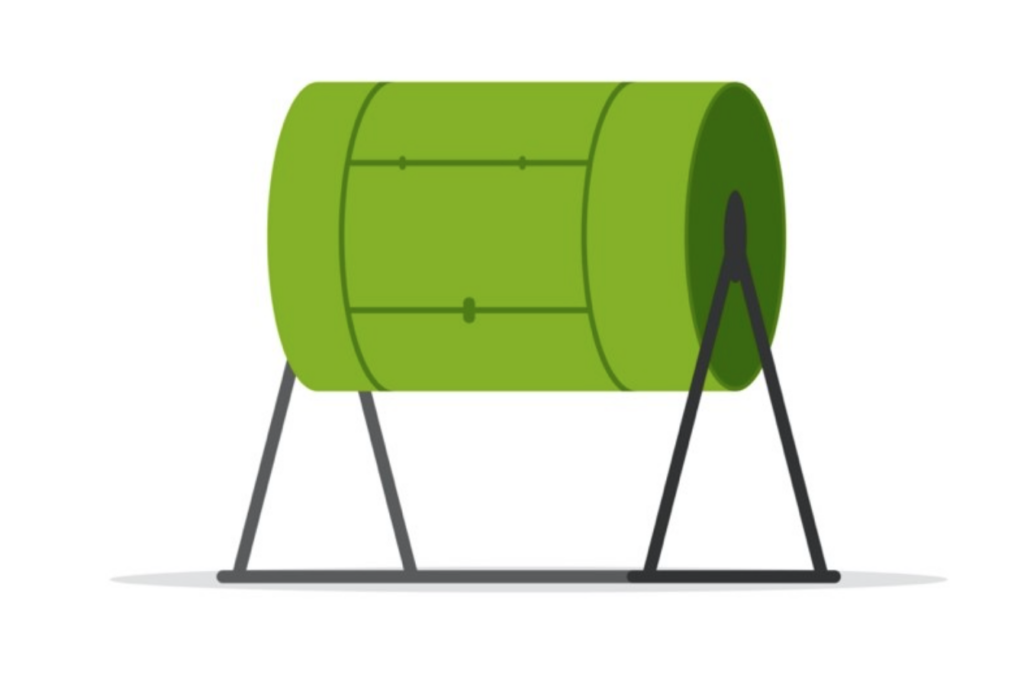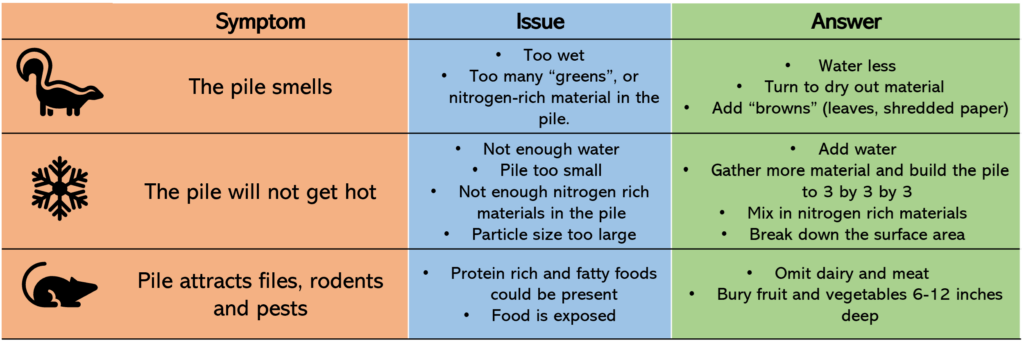Ode to Composting: A Loving Guide to Backyard Compost
Both my grandparents, one from Germany, and one from the United Kingdom served during the Second World War. During this time and in the post-war years, they both planted Victory Gardens, growing fruit, vegetables, and herbs. They also both composted. Citizens of both England and Germany were encouraged to think about what they ate and be conscious of how much food went to waste. Gardeners were empowered by their contribution to the wartime effort and rewarded with homegrown produce. On the home front, victory gardens were part of daily life.
When I was 6 years old, I remember my English grandfather showing me around the garden, pointing out his pretty runner bean plants, climbing up his wooden trellis, potatoes sprouting up out of the ground, and finally, a big pile of muck at the back of the garden. When I asked what this mound of muck could possibly be, he smiled pridefully and replied, “It’s a compost pile.”
Fast-forward 40 years, and composting has only gotten easier. We now have composters that don’t require any more work than walking over and dumping your wet and dry organic waste in, like the Aerobin. This bin is faster and simpler than the traditional open air compost method, or “muck pile”.
Many years after my grandfather showed me that muck pile, I’ve finally started composting myself and boy do I now understand his feeling of pride. It just feels right, returning the nutrients embedded in organic material from our kitchen or backyard back to the soil from which it came.
Besides just feeling good, composting is hugely beneficial to the environment. In the US, about one-third of all household garbage is made up of organic waste that could otherwise be composted. Taking up backyard composting and keeping your household organic waste out of the landfill just makes plain good sense.
Reasons to Compost
Composting is the recycling of organic matter through decomposition. It’s a natural process, in which dead or decaying organic material is broken into nutrient rich soil—known as humus—which is recognizable by its deep blackened-brown color. As a general rule, the darker the color, the healthier and more nutritious the soil. Decomposition, or composting, is an important part of Earth’s nutrient cycle that returns nutrients to the soil after an organism dies. You can call it nature’s recycling.
The benefits of composting include:
- Improving soil quality and plant yields
- Saving money on fertilizer – compost is free!
- Saving water – compost increases water retention of soil in your garden
- Reducing waste – otherwise, compost would go to landfill, where it cannot decompose properly
- Reducing GHG emissions
So how does composting reduce emissions? More of an aversion than a reduction, when compostable organic materials go to landfill, they are covered under so much other stuff, that they very often decompose in anerobic – no oxygen – conditions.
When this happens, organic material produces a super potent GHG called methane, which is 84 times stronger than CO2 and a big contributor to global warming. In contrast, when decomposed in aerobic—oxygen containing—conditions, some CO2 is produced, which, as part of the natural carbon cycle on Earth, does not count as GHGs resulting from human activity. However, if the compost is deposited back onto the soil, some of that will be absorbed back into the soil over time and stored there as a “carbon sink”. You can read more about the environmental benefits of composting as it relates to climate change here.
As for Ridgewood, unfortunately curbside composting isn’t quite here yet, but you can read more about the new Composting Pilot Program here. While we’re working on that, our options for dealing with household organic waste is limited to backyard composting or special collection (Neighborhood Compost services Ridgewood regularly; Java’s Compost offers pick-up for special functions).
Further information about composting in Ridgewood can be found in the Village’s Guide to Backyard Composting here.
How to Compost
One characteristic shared by all compost methods is the four ingredients required: browns (carbon-rich material), greens (nitrogen-rich material), water, and air. It’s that simple!
Browns: leaves, hay, twigs, corn cobs, pine needles, coffee grounds and even shredded paper and cardboard
Greens: grass (pesticides-free only), weeds, kitchen scraps or vegetative waste, eggshells (avoid meat and dairy as this will attract rodents)
You just have to remember that the ratio of browns to greens is really important for successful composting—as a general guide, you want to have two parts “browns” for every one part “greens”.
Compost can be divided into three different types:
- Stationary/Continuous Composters
This is where our favorite composter, the Aerobin, fits in. Stationary or continuous composters are easy to use and do not require batches. This means you put in your organic material at the top and collect finished compost soil from a hatch at the bottom.

- Compost Tumbler
A compost tumbler is a fully sealed container which can be rotated to mix the composting materials. The sealed container also helps contain the heat generated by the composting process, thereby speeding the process of converting kitchen and yard waste into compost.

- Worm, or Vermicompost (can use indoors)
Worm composting, or vermicompost, is a type of compost bin where worms digest kitchen/garden scraps, turning them into rich humus (garden compost). Basically, the worms migrate downwards, from the surface of the bin, chewing up and excreting organic waste until they reach the bottom of the container. Vermicomposters can be a single layer, of multiple stacked layers as shown in the image below.

Whether you purchase it or make your own from plastic tubs, you’ll need to purchase yourself some composting worms, which you can order online here. (for composting, red wrigglers are the best species of earthworm to use.
Its super easy to make your own vermicompost bin. If you have 10 minutes and a drill, this is the most cost-effective method. You can learn how to make your own vermicompost bin in this instructional video, or read further about the vermicompost method here (recommended).
- Open-Air Compost Pile
This is the simplest form of composting . Now, an open-air compost pile doesn’t need any support structure, but many people find having a simple support structure can help contain the “mess”. This is often in the form of a 3-sided or open-top wooden box.

After deciding which type is best for your needs, you can find a 2020 ranking of the best compost bin by category here.
Troubleshooting Tips

Further Reading
- Facebook group: Sustainable Ridgewood (talk composting here)
- Facebook group: Glen Rock Composting and Gardening
- YouTube: The Gardening Channel With James Prigioni
- Bergen County Composting Videos:
- Composting 101: Basic Overview
- Composting 101: On Leaves
- EPA – how the composting process works
- Bergen County Composting Factsheet
- Let it Rot by Stu Campbell (for those interested in a easily digestible explanation of the science behind it all)
